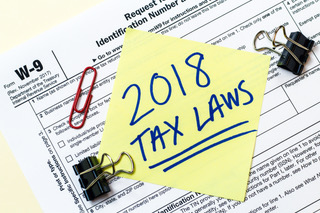
A long, long, time ago I worked in food service hustling drinks and huge plates of food to luncheon guests. I was always amazed at how much these guys could consume and continue working the afternoon! Who knows if any really did?
At that time business meals where 100% deductible as a taxable business expense. Under President Reagan the Tax Reform Act of 1986 changed that and the deductible percentage dropped to 80%. The food service industry went into a tizzy believing that their business would drop accordingly with the change in tax law. (That year I abandoned the food and beverage industry, purchased a 12-year-old Model 5 Eagle, and went into the bus business!) The Revenue Reconciliation Act of 1993 under President Clinton brought the deduction to 50% as of January 1, 1994. Not much has changed since then until President Trump passed the Tax Cut and Jobs Act of 2018.
So, what happened to the Martini Lunch? It most likely became the Craft Beer or Cabernet Lunch as tastes have changed. However, while assisting industry bookkeepers with their work a question still is asked, “Can we expense that pepperoni pizza?” I will let the Nerd fill you in on how this recent Act has changed what business meal, travel and entertainment expenses are tax deductible and what bookkeeping procedures you should put in place to properly record them.
Thank you, Mr. Bus Guy. The good news is that business meals are still partially deductible. Meals in which one conducts business with current clients, potential clients, networking sources, and meals while traveling for business are all still 50% deductible*. The IRS cautions these costs should not be “lavish” or “extravagant.” However, entertainment such as baseball games, concerts, and similar types of events are no longer deductible. Those are now reported for income tax purposes as “non-deductible expenses” and do not decrease the taxable income of the entity**.
Let me make another distinction here. Sometimes when food is provided, the entire expense can be written off. Meals provided as a part of an employee training event or meeting are fully deductible***. Additionally, meals and food provided for the convenience of the employer are also fully deductible. Do you keep beverages and snacks in the office for employees? Do you buy pizza for the staff when they are working late? Fully deductible!
To keep from having to look at this in detail at year end, I recommend tracking the three types of expenses separately during the year. Generally, this means having three different accounts:
- *Entertainment – not deductible for tax purposes
- **Meals – 50% deductible for tax purposes
- ***Meeting Meals (or just include with general meeting costs) – 100% deductible for tax purposes
This will have your books in order and ready for reporting Meal and Entertainment expenses properly to the IRS.
Let us at BUSBooks help you set up your books, giving you the peace of mind to manage your business! Together we can make your accounting more meaningful.
Written by Tracy Fickett, CPA and Peter Shelbo, Veteran Bus Operator
BUSBooks is a unique CPA accounting firm dedicated to the motorcoach industry.


 This time of year, you can count on a few things…the Superbowl countdown is on, the Rose Parade is not rained out, and YOUR TAXES will need to be filed soon. As your company prepares for its tax return, here’s a few things to keep in mind.
This time of year, you can count on a few things…the Superbowl countdown is on, the Rose Parade is not rained out, and YOUR TAXES will need to be filed soon. As your company prepares for its tax return, here’s a few things to keep in mind.